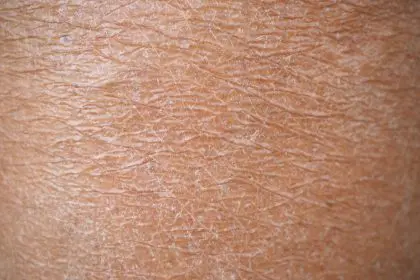Skin firmness represents one of the most coveted signs of youth, yet many people unknowingly engage in daily habits that accelerate the sagging process. While aging naturally affects skin elasticity over time, certain behaviors and lifestyle choices can dramatically speed up this unwanted transformation.
The structure of healthy skin relies on collagen and elastin fibers that provide support, bounce, and resilience. When these essential proteins become damaged or depleted, skin begins to lose its ability to snap back into place, leading to the drooping and sagging that many fear.
Understanding the factors that contribute to premature skin sagging empowers individuals to make informed choices about their daily routines. Many of these accelerating factors are completely within personal control, meaning that simple changes can have profound effects on maintaining skin firmness over time.
The misconception that sagging skin is purely a result of aging leads many people to neglect preventive measures during their younger years. In reality, the foundation for future skin firmness is built through consistent daily practices that protect and support the skin’s structural integrity throughout life.
The yo-yo dieting disaster
Repeated cycles of weight loss and gain create one of the most damaging scenarios for skin elasticity. When weight fluctuates dramatically and frequently, the skin stretches and contracts beyond its natural capacity to recover, leading to permanent loss of firmness and increased sagging.
During rapid weight gain, skin stretches to accommodate increased body volume. While skin possesses remarkable elasticity, extreme or repeated stretching can damage the underlying collagen and elastin fibers that provide structural support. Once these fibers become compromised, they cannot fully regenerate.
The weight loss phase of yo-yo dieting presents additional challenges for skin firmness. When weight drops quickly, the skin that expanded to accommodate extra body mass is left without adequate internal support. Without sufficient time for gradual contraction, the skin often remains loose and saggy.
Age plays a crucial role in how well skin recovers from weight fluctuations. Young skin with abundant collagen and elastin can bounce back more effectively from stretching, while mature skin lacks the regenerative capacity to fully recover from dramatic size changes.
The speed of weight changes significantly impacts skin damage. Gradual weight loss allows skin time to contract slowly and maintain some firmness, while rapid changes leave skin struggling to adapt and often permanently stretched.
Sun damage accumulation
Ultraviolet radiation represents one of the most destructive forces acting on skin structure, breaking down collagen and elastin fibers that maintain firmness and elasticity. This damage accumulates over years of exposure, eventually manifesting as noticeable sagging and loss of skin tone.
UV rays penetrate deep into the skin layers, creating free radicals that attack the structural proteins responsible for skin support. This process, known as photoaging, occurs gradually and often goes unnoticed until significant damage has already occurred.
The face, neck, and hands typically show the earliest signs of sun-induced sagging because these areas receive the most consistent UV exposure throughout life. Decades of unprotected sun exposure in these regions lead to accelerated breakdown of supportive skin structures.
Different types of UV radiation cause varying degrees of damage to skin firmness. UVA rays penetrate deepest and cause the most structural damage to collagen and elastin, while UVB rays primarily affect the skin surface but contribute to overall photoaging processes.
Even indoor environments can contribute to skin sagging through UV exposure from windows and artificial lighting. This constant, low-level exposure adds to the cumulative damage that eventually results in loss of skin firmness and increased sagging.
Sleep position sabotage
The position in which you sleep each night can significantly impact skin sagging, particularly on the face and neck. Sleeping on your side or stomach creates repetitive pressure and folding patterns that, over years, can lead to permanent creases and accelerated skin drooping.
Gravity works against skin firmness during sleep, and certain positions exacerbate this effect. Side sleeping causes facial skin to compress and fold against the pillow, creating stress lines that eventually become permanent as skin loses its ability to bounce back from repeated compression.
The delicate skin around the eyes and mouth is particularly vulnerable to sleep position damage. These areas naturally have less structural support and are more prone to developing permanent creases and sagging from nightly pressure and folding.
Pillow materials and firmness levels can either worsen or minimize sleep position damage to skin. Rough or overly firm surfaces create more friction and pressure against the skin, while smooth, supportive materials can reduce the mechanical stress placed on facial structures during sleep.
The duration and consistency of sleep position habits determine their long-term impact on skin sagging. People who sleep in the same position every night for years or decades are most likely to develop permanent changes in skin firmness and positioning.
Dehydration damage
Proper hydration maintains skin plumpness and firmness by supporting the cellular structures that give skin its volume and elasticity. Chronic dehydration causes skin cells to shrink and lose their supportive capacity, leading to increased sagging and loss of skin tone.
Water serves as a crucial component in maintaining the skin’s structural integrity. When hydration levels drop, skin cells cannot maintain their optimal volume, causing the skin to appear deflated and more prone to drooping under the influence of gravity.
The hyaluronic acid naturally present in skin relies on adequate hydration to maintain its volume-enhancing properties. This substance can hold up to 1000 times its weight in water, but without sufficient hydration, it cannot provide the plumping effect that supports skin firmness.
Dehydration affects skin at multiple levels, from individual cellular function to the overall appearance of skin texture and tone. Chronically dehydrated skin appears dull, flat, and more susceptible to the gravitational forces that cause sagging.
Internal hydration through adequate water intake provides more effective skin support than topical moisturizers alone. While external hydration helps maintain the skin barrier, internal hydration supports the deeper structural elements that maintain skin firmness.
The smoking acceleration effect
Smoking dramatically accelerates skin sagging through multiple mechanisms that attack the structural foundation of healthy skin. The chemicals in tobacco smoke damage collagen and elastin fibers while simultaneously restricting blood flow that delivers nutrients essential for skin repair and maintenance.
Nicotine and other toxic compounds in cigarettes directly break down the proteins responsible for skin firmness and elasticity. This destruction occurs at a rate far exceeding natural aging processes, leading to premature and pronounced sagging in smokers.
The repetitive facial movements associated with smoking create additional mechanical stress on facial skin. Pursing lips around cigarettes and squinting to avoid smoke create repetitive muscle contractions that eventually lead to permanent creases and sagging around the mouth and eyes.
Reduced blood circulation from smoking deprives skin of oxygen and nutrients necessary for maintaining healthy collagen production. Without adequate circulation, skin cannot repair daily damage or produce new structural proteins to replace those that break down naturally over time.
The carbon monoxide in cigarette smoke displaces oxygen in the bloodstream, further compromising the skin’s ability to maintain its structural integrity. This oxygen deprivation accelerates the breakdown of existing collagen and prevents the formation of new supportive fibers.
Aggressive skincare mistakes
Overly harsh skincare routines can damage the skin’s protective barrier and accelerate the breakdown of structural proteins that maintain firmness. Excessive scrubbing, harsh chemicals, and aggressive treatments can thin the skin and make it more susceptible to sagging over time.
Mechanical exfoliation, when performed too frequently or with excessive pressure, can damage the skin’s surface and underlying structures. This damage compromises the skin’s ability to maintain its protective barrier and structural integrity, leading to increased vulnerability to sagging.
Chemical peels and acid treatments, while beneficial when used appropriately, can cause significant damage when overused or applied too aggressively. These treatments remove protective skin layers and can lead to thinning that makes skin more prone to gravitational sagging.
Failure to use appropriate moisturization after aggressive treatments leaves skin vulnerable to damage and dehydration. Without proper barrier repair, the skin cannot maintain its structural integrity and becomes more susceptible to firmness loss.
The timing and frequency of skincare treatments significantly impact their effect on skin sagging. Treatments that are too frequent or intense can overwhelm the skin’s natural repair mechanisms, leading to cumulative damage that manifests as increased sagging over time.
Poor posture problems
Chronic poor posture creates gravitational forces that accelerate sagging in the face, neck, and chest areas. Spending hours daily with the head tilted down or forward creates constant downward pressure that contributes to the development of sagging skin and loss of firmness.
Forward head posture, common in people who spend long periods looking at screens, creates additional gravitational stress on facial and neck skin. This position causes skin to hang forward and downward, accelerating the natural sagging process that occurs with aging.
The muscles that support facial structure become weakened when chronically held in poor positions. Weak facial muscles cannot adequately support the overlying skin, leading to increased sagging and loss of definition in facial contours.
Rounded shoulders and forward head posture also affect the appearance of the neck and chest area, causing skin in these regions to fold and sag more prominently. The constant compression and folding of skin in these areas can lead to permanent changes in skin positioning.
Correcting posture can help minimize ongoing damage to skin firmness, but reversing existing damage requires more comprehensive intervention. The earlier posture problems are addressed, the less permanent damage occurs to skin structure and positioning.
Inadequate protein intake
Collagen and elastin, the primary structural proteins that maintain skin firmness, require adequate protein intake for their production and maintenance. Insufficient dietary protein can lead to decreased production of these essential fibers, resulting in accelerated skin sagging and loss of elasticity.
The amino acids that serve as building blocks for collagen production must come from dietary sources since the body cannot produce all essential amino acids independently. Without adequate protein intake, the skin cannot maintain its structural integrity or repair daily damage effectively.
Age-related decreases in protein absorption and utilization make adequate intake even more critical for maintaining skin firmness in older adults. The body’s ability to process and utilize dietary protein declines with age, requiring higher intake levels to maintain optimal skin structure.
Different types of protein provide varying levels of support for skin structure. Complete proteins that contain all essential amino acids offer the best support for collagen and elastin production, while incomplete proteins may leave gaps in the building blocks needed for optimal skin health.
The timing of protein intake throughout the day can impact its utilization for skin health. Spreading protein consumption across meals provides a more consistent supply of amino acids for ongoing collagen production and skin repair processes.
Chronic stress consequences
Persistent stress elevates cortisol levels, which directly interfere with collagen production and accelerate the breakdown of existing structural proteins in the skin. This hormonal disruption can significantly accelerate skin sagging and loss of firmness over time.
Stress-related muscle tension, particularly in the face and neck, can contribute to the development of permanent creases and sagging. Chronic tension creates repetitive stress patterns that eventually become fixed in the skin and underlying structures.
Poor sleep quality, often associated with chronic stress, interferes with the body’s natural repair processes that occur during rest. Without adequate restorative sleep, the skin cannot effectively repair daily damage or produce new collagen to maintain firmness.
Stress-induced behaviors such as facial expressions, teeth grinding, or skin picking can create additional mechanical stress that contributes to skin sagging. These unconscious habits often persist for years, creating cumulative damage to skin structure.
The inflammatory processes triggered by chronic stress can damage collagen and elastin fibers while interfering with the production of new structural proteins. This creates a cycle where stress simultaneously destroys existing skin support while preventing adequate replacement.
Protecting skin firmness moving forward
Understanding the factors that accelerate skin sagging empowers individuals to make informed choices that protect and preserve skin firmness throughout life. Many of these protective measures are simple lifestyle modifications that can have profound long-term effects on skin health and appearance.
Consistent daily habits that support skin structure provide more effective protection than sporadic intensive treatments. Regular sun protection, adequate hydration, proper nutrition, and gentle skincare routines create the foundation for maintaining skin firmness over time.
Early intervention provides the greatest benefits for preventing skin sagging, but positive changes can benefit skin health at any age. The skin’s remarkable ability to repair and regenerate means that protective measures can slow or halt further damage even when some sagging has already occurred.
Professional guidance can help individuals develop personalized approaches to maintaining skin firmness based on their specific risk factors and current skin condition. Combining professional treatments with appropriate daily care provides optimal protection against accelerated skin sagging.

















